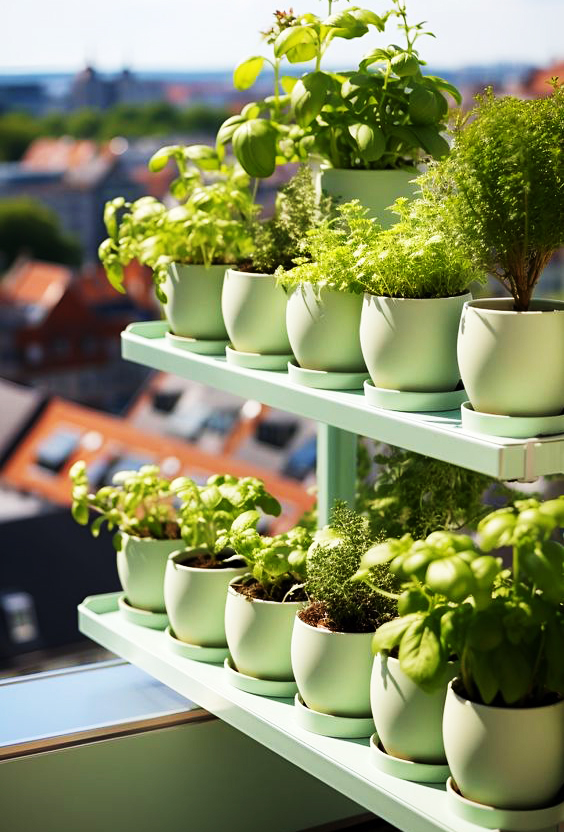The umbrella plant (schefflera) is a unique-looking houseplant that’s native to Taiwan and southern China. The houseplant version is typically referred to as an octopus tree or a dwarf umbrella tree because it’s smaller than what would grow in nature (the Schefflera actinophylla).
These plants are popular for homes and offices because they are low-maintenance, tolerant of different conditions, and can help improve air quality. Their leaves grow in a unique, flower-like pattern. Umbrella plants are available in solid green and variegated green-and-yellow varieties, each with its own care requirements, which I’ll outline in this post.

Umbrella Plant Light Needs
Umbrella plants thrive in bright, indirect light. This means they do well near a window where they can receive plenty of light, but not direct sunlight for extended periods. Direct sunlight can scorch the leaves. These plants, like many others, can adapt to lower light conditions, but they will grow more slowly and may appear less full. Similar to other plants that prefer bright light but can tolerate lower light levels, umbrella plants will grow towards the nearest light source. To prevent them from growing unevenly or sideways, you can rotate the plant slightly every month.

Growth Patterns, Repotting, & Pruning
The umbrella plant is known for its fast growth rate. With proper care and regular fertilization, it can quickly outgrow its pot within a single growing season. Despite this, umbrella plants are generally content in pots that are relatively small compared to their size. When it comes time to repot, choose a pot that is just slightly larger than its current one.
Umbrella plants can exhibit different growth patterns, from tall and slender to shorter and more compact, making them suitable for rooms with high ceilings or as tabletop plants. With proper care, they can grow quite tall, reaching up to 6 feet or even taller. As they grow, they may also develop climbing tendencies.
To support their growth, feed your umbrella plant with a standard houseplant fertilizer, such as a 20-20-20 blend, as recommended during the growing season.
To maintain a shorter stature for your plant, trim off the new growth at the top. This encourages the growth of additional shoots along the main stem, resulting in a bushier appearance. However, even with consistent pruning to promote lower growth, the plant won’t become excessively bushy. At most, it will remain under 2 feet wide.
%20(1).png)
How much water does an umbrella plant need?
When it comes to watering your umbrella plant, it’s important to avoid overwatering. While the plant prefers slightly moist soil, it doesn’t do well in soggy conditions. Achieving the right balance can be challenging and depends on factors such as the time of year and temperature, which affect how quickly the soil dries out
A general rule of thumb for watering an umbrella plant is to water it when the top inch of soil has dried out. Unlike some other houseplants that can tolerate having the top few inches of soil dry out, the umbrella plant prefers a more consistent level of moisture. If you occasionally forget to water it and the soil dries out quickly, the plant will usually recover without issue. However, it’s best not to make a habit of this, as it can lead to signs of stress. During the winter months, you can reduce your watering frequency by about half.

Umbrella Plant Care: Temperature & Humidity Needs
The umbrella plant is quite adaptable to different temperature and humidity levels, unlike some more finicky plants (like the fiddle leaf fig). It generally thrives in typical household temperatures, ranging from around 60 to 75 degrees Fahrenheit. Variegated umbrella plants, similar to variegated pothos varieties, benefit from higher temperatures and increased light exposure, while solid green varieties can tolerate lower light conditions better. While the umbrella plant can tolerate lower humidity levels, misting its foliage or using a humidifier in the room can be beneficial, especially if you’re dealing with pest issues. Increasing humidity can help prevent pests and promote healthier growth.
Umbrella Plant Propagation Tips
I haven’t attempted to propagate an umbrella plant yet, but the process typically involves taking a cutting from a growing tip during the plant’s active growth season. Alternatively, you can divide an existing plant at the root system and repot the divisions separately. It’s best to do this during the spring or summer when the plant can recover more easily from any shock caused by the propagation process
Common Problems With Umbrella Plants
1. Pest infestations
Umbrella plants are prone to pest infestations, with scale being a common issue. I once encountered a situation where my mom’s office had a lovely umbrella plant that left sticky residue on the counter. We were puzzled about the cause until we discovered it was due to a scale infestation.
Scale insects excrete a sticky substance, which can attract mold and create a sooty mess. While scale infestations can be challenging to eradicate, simply moving the plant can sometimes resolve the issue, as was the case with my mom’s plant.
Spider mites and gnats are other potential pests that can be problematic for umbrella plants. Since these pests thrive in dry conditions, increasing humidity levels by
2. Crooked plant
If an umbrella plant is grown in low light conditions, it should be rotated every week or so to promote straight growth. Failure to do so may result in the plant becoming crooked as it grows towards the light. Once the plant is crooked, the main stem cannot be straightened.
3. Leaves falling off
If leaves are falling off, it could be due to cold temperatures. Changes in the environment, such as drafts, can also cause leaf drop. While the plant can still survive and develop a more tree-like appearance as leaves drop from the bottom, this is not ideal for maintaining a full appearance. Similar to the fiddle leaf fig, the umbrella plant does not regrow lost leaves. If leaves appear sad and are on the verge of falling off, it may be due to over or underwatering.




Leave a Reply